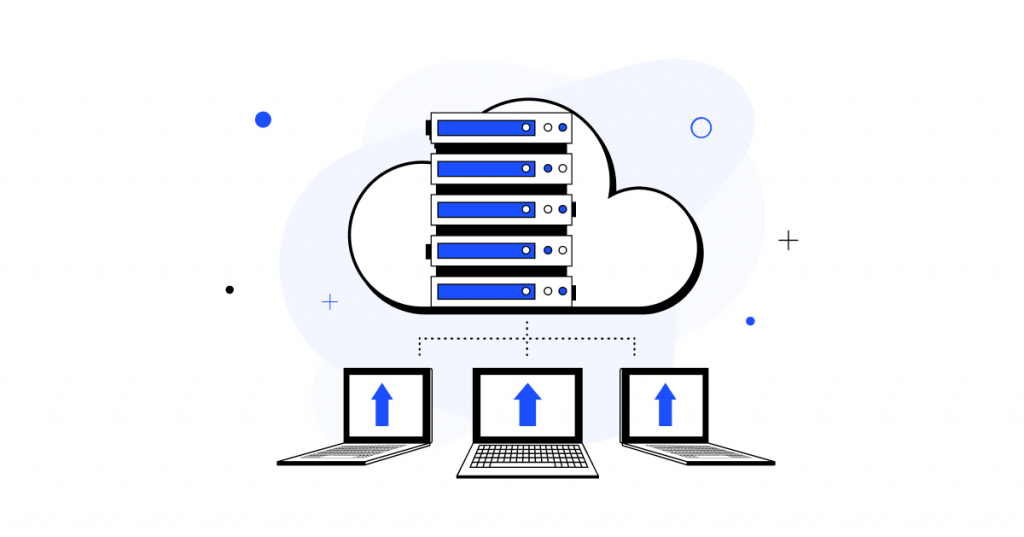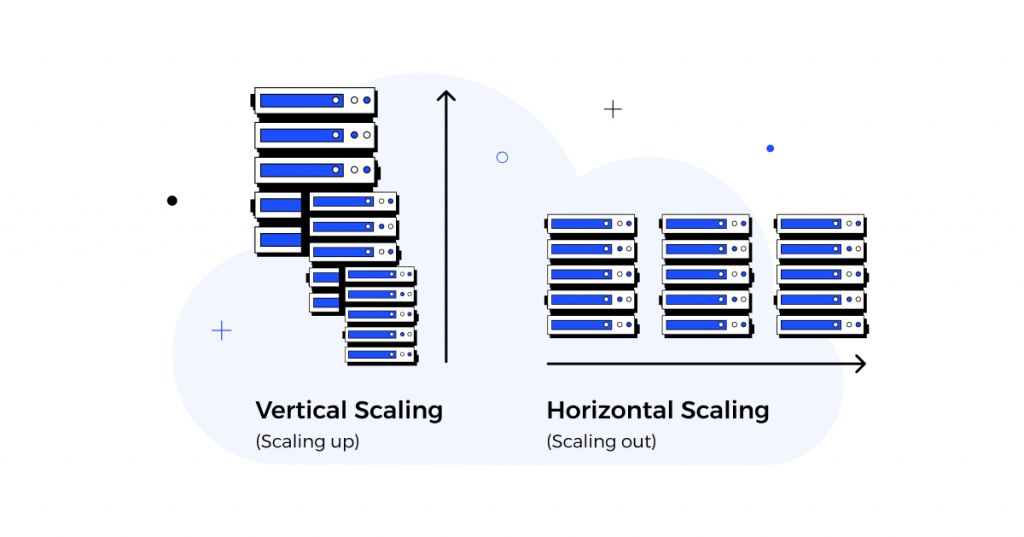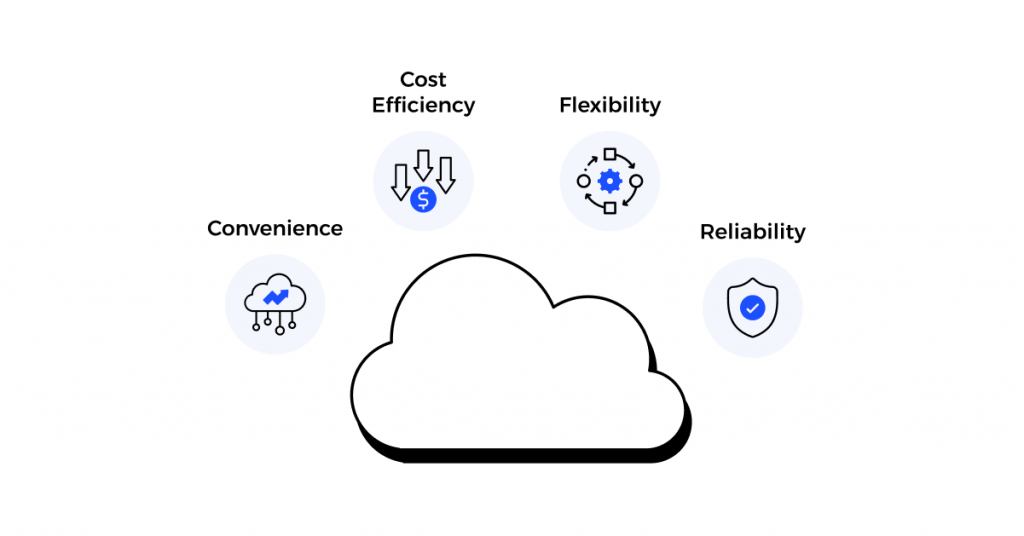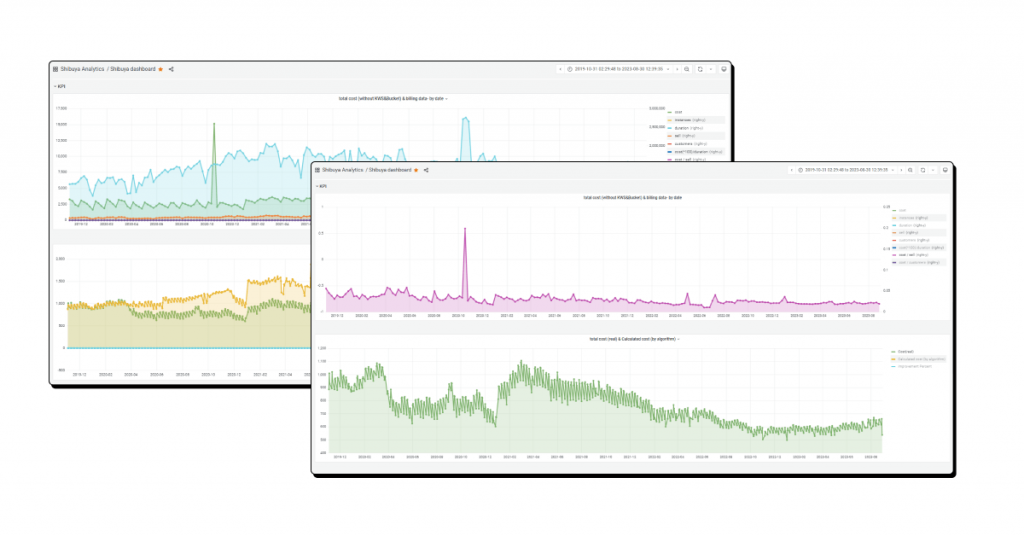As an increasing number of businesses and organizations, both small and large-scale enterprises, are moving their infrastructure to the cloud, which accounts for the growing adoption of cloud computing worldwide – many are still not fully aware of all the benefits the cloud has to offer. Scalability is one of those undeniable advantages that make cloud computing an essential component of running a successful business and managing resources and costs effectively.
In this blog, we’ll take a deeper look at what scalability in cloud computing means, the types of scaling, and what specific benefits are associated with scalability. If your business is currently in the process of growing, it’s particularly important to understand how cloud scalability can be achieved and help you meet your business needs.
Uncover opportunities to optimize your cloud, simplify cloud management, and reduce costs.
What is Cloud Scalability?
Scalability in cloud computing refers to the ability of a cloud computing system to increase or decrease IT resources, such as data storage capacity, computing power, processing power, or network capacity, on demand to adapt to an organization’s changing computing requirements. E.g., if at some point your business needs more data storage, it can be easily added; and once the demand goes down, you can revert to the original capacity.
The best part, you don’t have to spend as much time and effort overhauling your infrastructure as you would with an on-premises solution. Third-party cloud providers already have all the infrastructure in place that businesses can instantly leverage to scale their operations as needed with nearly no downtime, ensuring business continuity. Plus, it doesn’t require significant expenses as compared to scaling on-premises infrastructure with physical hardware.
Scalability is, in fact, one of the major advantages of cloud computing and the primary driver of its growing popularity among businesses.
Manage your single or multi-cloud infrastructure and cut down on your cloud bill.

Cloud Scalability vs. Cloud Elasticity
Before we talk about the benefits and technologies that enable cloud computing scalability, let’s make things clear about how cloud scalability is different from cloud elasticity. While these two concepts are related, they aren’t entirely the same.
As described above, scalability is the system’s ability to add or remove computing resources as needed, which enables stable, long-term, strategically planned growth. A business that is growing at a predictable pace would benefit from a scalable solution.
Elasticity is a system’s ability to dynamically grow or shrink based on changing workload demands, such as adding more storage capacity in response to a sudden spike in website traffic caused by running a promo campaign and then automatically decreasing it when the spike has passed. Elasticity addresses more immediate shifts in demand, meaning that it’s intended for businesses with variable and unpredictable workloads.
In a nutshell, scalability is simply the ability to scale computing resources up or down based on demand, while elasticity is how fast the system can add or remove resources to adjust to variable demand. That being said, both are essential features in the cloud environment.
Technologies and Tools to Achieve Cloud Scalability

Scalability in cloud computing is made possible primarily through these technologies and tools:
Virtualization
Virtualization is one of the key technologies behind cloud scalability. It refers to creating virtual instances of resources like servers, operating systems, or networks on a dedicated machine. It enables efficient resource utilization by running multiple virtual machines (VMs) on a single physical server and the ability to easily scale VMs up or down as needed, as they can be moved to a different server or hosted on multiple servers at once.
Containerization and orchestration
Containerization and container orchestration tools like Kubernetes that help you manage containerized applications offer advanced features like automatic load balancing and horizontal scaling of containers based on resource utilization. Kubernetes, in fact, has a specific tool (Horizontal Pod Autoscaler) that automatically scales the workload to match demand.
Auto-scaling and load balancing
Cloud service providers enable you to set custom auto-scaling policies based on specific triggers and metrics to automatically adjust resource allocation to fulfill varying demands. Load balancing manages and distributes the incoming network traffic across multiple servers or instances, ensuring that workloads are distributed evenly for the optimal resource utilization.
Serverless computing
Using serverless computing is an excellent way to achieve cloud scalability since serverless architectures are inherently scalable. Applications built with a serverless infrastructure are able to scale automatically as usage increases, with cloud providers automatically allocating resources as needed, which ensures granular scalability.
Types of Scaling in Cloud Computing
To get a better understanding of how cloud scalability works, let’s explore the three types of scalable cloud architecture:
Vertical scaling
Vertical scaling, also known as scaling up or down, involves adding more resources to your existing server to increase its capacity or capabilities when your workload increases. It’s typically done by increasing the server’s computing power or adding more memory (RAM), processing power (CPU), or storage capacity.
Vertical scaling is a popular scaling option as it can be done relatively easily, with no code alterations required and without needing to purchase additional servers or instances. The downside of vertical scaling is that it has an upper limit bounded by the capacity of the server or machine; therefore, scaling beyond that may cause downtime.

Horizontal scaling
Horizontal scaling, also known as scaling in or out, involves increasing the capacity of a system by allocating additional resources to manage the workload, as opposed to increasing the capacity of the existing resources, which makes this type of scaling more complex than the vertical one.
Horizontal scaling may involve processes like distributed computing, load balancing, and clustering. E.g., if you are hosting an application on a server, and the database reaches the limits of the server, you may want to add more servers to distribute the additional workload across machines. Horizontal scaling is an effective way to enhance system performance, and there are basically no limitations to it.
Diagonal scaling
Diagonal scaling is a hybrid of both vertical and horizontal scaling, with resources added vertically or horizontally. Diagonal scaling allows for maximum flexibility, making it an efficient solution for organizations facing unpredictable surges. When vertical and horizontal scaling are used in tandem, you can scale vertically by increasing the capacity of your existing cloud infrastructure until the server’s limit is reached and then scale horizontally by adding more resources to continue the process.
The decision on when and how to scale depends on multiple factors, which is why ongoing performance testing and scalability testing are critical. IT staff should continuously measure latency, load, and capacity to understand how applications perform under various conditions. Scalability testing will also help them determine how well an application can scale up or down depending on user needs. Without consistent monitoring and the right management, organizations may face performance issues, leading to downtime and increased costs.
Benefits of Cloud Scalability

Convenience
Cloud scalability provides businesses with a fast, convenient, and agile way to handle changing business demands. Increasing or decreasing your computing resources based on demand requires only a couple of clicks from your IT staff, with no need to waste time and effort adjusting physical hardware.
Cost efficiency
Instead of purchasing, configuring, and maintaining physical hardware, which involves significant upfront investment and requires having dedicated IT personnel, businesses can use cloud infrastructure provisioned by cloud providers and scale up or down resources according to their needs. That ultimately means you pay only for what you use, allowing you to save on IT costs in the long run.
Flexibility
Cloud scalability enables greater flexibility when businesses face new challenges. In a fast-paced business environment, cloud scalability allows organizations to respond almost instantly to demand changes and easily adjust their resource usage to adapt to situations like unexpected spikes in demand.
Reliability
Cloud scalability allows businesses to adequately respond to sudden increases or decreases in workload demand with minimal or no downtime. Besides, as cloud providers are able to distribute workloads across multiple servers or regions and provide efficient data recovery solutions, it helps ensure business continuity.
Environmental impact
This is one of the not-so-obvious benefits of cloud scalability, but it’s still worth mentioning. In this day and age, when the adoption of green cloud computing is on the rise, cloud scalability enables businesses to become more sustainable and reduce their carbon footprint by using green cloud providers and enabling more efficient resource utilization with minimized waste.
Key Takeaways
From flexibility and reliability to cost savings, cloud scalability offers multiple benefits over on-premises solutions, allowing businesses to quickly and almost effortlessly access the resources they need when they need them or reduce resource consumption to eliminate cloud waste. Whether your organization is scaling vertically, horizontally, or diagonally, make sure you are aware of the costs these changes involve and how those will impact your overall cloud expenses.
Luckily, you can leverage the intelligence of third-party cloud cost management software platforms like Shibuya to optimize cloud scalability through automation while also getting full context around your cloud resource usage and spend, enabling you to make more informed decisions as you scale.

Book a demo with one of our reps now and get a personalized walkthrough of Shibuya’s multi-cloud cost management solution and how it can help you optimize your cloud usage, manage your scaling needs, and achieve unparalleled cost savings.
